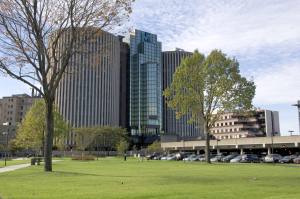By Joshua Beltran, Research Assistant, Center for Health Equity Engagement Education and Research

A recent article in The New Yorker, titled “Costa Ricans Live Longer Than We Do. What’s the Secret?“, showcases the benefits of prioritizing public health. These benefits including both healthier communities and lower health care costs, the article goes as far to say that Costa Rica “spends less than we do on health care and gets better results.” A statement which should not be taken lightly. In fact, poignant statements highlighting Costa Rica’s community health improvements, via bolstering public health efforts, over the past few decades are littered throughout the article. The article can be viewed as a redemption tale of how a country that had high infant-mortality and low life expectancy improved these aspects beyond other countries with higher national income and GDP by incorporating better public health practices. Costa Rica’s public health efforts aren’t simply a matter of how much money they spent but more importantly what they spent it on, a sentiment that resonates with me in regard to public spending in America. The article explains that “In this early period, the country spent more of its G.D.P. on the health of its people than did other countries of similar income levels—and, indeed, more than some richer ones.” The Costa Rican government focused on “the most readily preventable kinds of death and disability.” Their Ministry of Health aim was in preventing infectious-disease outbreaks, malnutrition, toxic hazards, sanitary problems, and the like. Many systems were put in place such as health units directing pregnant women to prenatal care and delivery in hospitals, nutritional programs to combat malnutrition and reduce underweight births, sanitation and vaccination campaigns to contain infectious diseases, all of which would lead to lower infant-mortality rates and higher life expectancy. These changes were not instant, in fact, they required decades to come to almost full fruition.

However, I believe they have built something sustainable and so does Alvaro Salas, a Costa Rican native from the city of Atenas, who is the main focal point of the article and whose personal experience adds context and weight to these health advancements. These advancements aren’t something that are only applicable to issues rooted in the past but have implications on current health issues, most notably, the COVID-19 pandemic. Salas postures that “If we were oriented toward public health, we would have been in touch with all our patients, if not everyone in the communities we serve, to schedule appointments for vaccination against the coronavirus, the No. 3 killer in the past year. We would have coordinated with public-health officials to prevent cardiovascular disease, the No. 1 killer, by jointly taking aim at high blood pressure and cholesterol, smoking, and dietary salt intake. We would have made a priority of preventing disease, rather than just treating it.” I want to avoid further spoiling of the article because I feel it is a worthwhile read that adds perspective to the way public health needs are addressed, with that I want to provide one last excerpt that had an impact on me, “Across all age cohorts, the country’s increase in health has far outpaced its increase in wealth. Although Costa Rica’s per-capita income is a sixth that of the United States—and its per-capita health-care costs are a fraction of ours—life expectancy there is approaching eighty-one years. In the United States, life expectancy peaked at just under seventy-nine years, in 2014, and has declined since.”
[divider style=”none” icon=”download”]
[/divider]
Download Article
